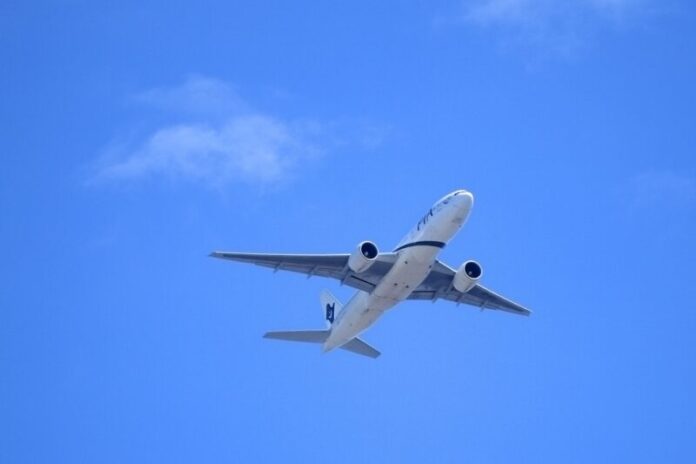-
Global demand, measured in cargo tonne-kilometers (CTKs), fell 7.7% from March 2022, according to latest data from the International Air Transport Association
-
The latest figure is, however, a slight improvement from February’s performance (-9.4%) and half the rate of annual decline posted in January and December (-16.8% and -15.6% respectively)
-
In March, overall demand slipped back below pre-COVID-19 levels and most of the indicators for the fundamental drivers of air cargo demand are weak
Global air cargo markets continued their year-on-year decline in March, landing back to below pre-COVID levels, latest data from the International Air Transport Association (IATA) showed.
Global demand, measured in cargo tonne-kilometers (CTKs), fell 7.7% from March 2022 (-8.1% for international operations).
The latest figure is, however, a slight improvement from February’s performance (-9.4%) and half the rate of annual decline posted in January and December (-16.8% and -15.6% respectively), IATA said in a statement.
“At this point, it is unclear if this is a potentially modest start of an improvement trend or the upside of market volatility. Irrespective of this, March performance slipped back into negative territory compared to pre-COVID levels (-8.1%),” the association said.
Capacity (measured in available cargo tonne-kilometers, ACTK) was up 9.9% compared to March 2022, a result of the addition of belly capacity with the passenger side of the business continuing to recover.
“Air cargo had a volatile first quarter. In March, overall demand slipped back below pre-COVID-19 levels and most of the indicators for the fundamental drivers of air cargo demand are weak or weakening. While the trading environment is tough, there is some good news. Airlines are getting help in managing through the volatility with yields that have remained high and fuel prices that have moderated from exceptionally high levels. Looking ahead, with inflation reducing in G7 countries policy makers are expected to ease economic cooling measures and that would stimulate demand,” said Willie Walsh, IATA’s Director General.
IATA pointed to several factors in the operating environment worth noting, including:
- the continued deceleration of the global economy due to tightening global financial conditions, high levels of global debt, and supply chain problems, including those linked to the war in Ukraine;
- the Purchasing Manager Indices (PMIs) for new export orders at the global level remaining below the 50-critical line for a full year as of March in line with the weakening global trade;
- China’s PMI retreating to below the 50-mark in March, following a slight improvement in February. The PMI for supplier delivery times indicates high inventory levels, which tends to have a negative impact on air cargo.
- global goods trade decreasing by 2.6% in February, a faster rate of decline than the previous month of -1.0%.
Asia-Pacific airlines saw their air cargo volumes decrease year-on-year by 7.3% in March 2023, a slight decrease in performance compared to February (-5.4%).
IATA said the drop in demand suggests air cargo traffic in the region has not yet stabilized following China’s reopening in January. Available capacity in the region grew by 23.6% year-on-year as more belly capacity came online from the passenger side of the business.
North American carriers posted the weakest performance of all regions with a 9.4% decrease in cargo volumes in March 2023 compared to the same month in 2022. This represented a decrease in performance compared to February (-10.3%). The transatlantic route between North America and Europe saw traffic declining at an accelerated pace throughout March. Capacity increased 0.4% compared to March 2022.
European carriers saw the most substantial improvement in demand in March over the previous month. Airlines in the region saw their air cargo volumes decrease by 7.8% in March 2023 vid-vis March 2022. This was an improvement in performance versus February (-15.9%). Airlines in the region continue to be most affected by the war in Ukraine. Capacity increased 8.8% in March 2023 compared to March 2022.
Middle Eastern carriers experienced a 5.5% year-on-year decrease in cargo volumes in March 2023. This was also an improvement to the previous month’s decline (-7.1%). The demand on Middle East-Europe routes has been trending upward in recent months. Capacity increased 9.7% compared to March 2022.
Latin American carriers had the strongest performance of all regions in March despite posting a decline in performance over the previous month. Carriers in the region reported a 5.3% decrease in cargo volumes in March 2023 compared to March 2022. This was a drop in performance compared to February which saw a 2.9% decrease. Capacity in March was up 12.9% compared to the same month in 2022.
African airlines saw cargo volumes decrease by 6.2% in March 2023 compared to March 2022. This was an improvement in performance compared to the previous month (-7.4%). Notably, Africa to Asia routes experienced significant cargo demand growth in March. Capacity was 4.1% below March 2022 levels.
RELATED READ: Positive signs seen in February air cargo levels





